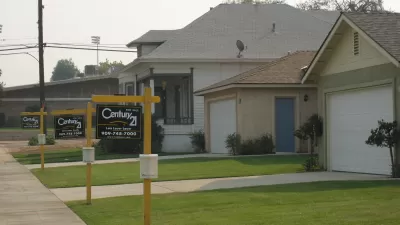Actual demand for a place's housing might exceed increases in the number of residents or households.

Every so often, I read something on a listserv on a Facebook group saying something like "my city added a few thousand households, and it added a few thousand housing units. Therefore, supply must be keeping up with demand."
Admittedly,, demand as well as supply is relevant to housing costs—that’s why declining cities are often so cheap. But household growth is not the best way to measure demand for housing.
This is the case for at least two reasons. First, treating "city household growth" as demand overlooks people who are priced out of a city and thus cannot form households in the city. For example, suppose that a city adds 200,000 apartments for 200,000 new households, but 500,000 households want to live in the city but are priced out. Obviously, the demand for the apartments includes not just the 200,000 households who can afford the city, but the 500,000 more who cannot (in addition to city residents who are homeless and might not be counted as households).
Second, even the "200,000 households" figure include people who are forced to live together by high housing costs, but who in a cheaper city would live alone. For example, suppose that two people live together as roommates in order to avoid Manhattan’s high rents, but would live alone if rents were lower. For purposes of calculating demand, are they one household or two?
Perhaps a city's job growth is a better measure of demand for that city's housing. For example, New York City added over 900,000 jobs during the 2010s, more than four times the number of housing units added. Does that mean that 900,000 new people joined the market for New York City housing during this period? Partially. On the one hand, this number might underestimate demand for New York housing, because some people priced out of New York decide to move to other parts of the United States. Thus, it might be argued that demand for housing includes not just the 900,000 new workers, but also an unknown number of people who wish they could work or create jobs in the city, but cannot do so due to high housing costs.
On the other hand, some of those 900,000 new employees live in suburbs for reasons unrelated to housing costs, and might not be willing to move into the city no matter how low rents go. If this is the case, some of these 900,000 new employees should never be counted as part of demand for city housing.
Thus, it seems likely to me that the demand for New York City housing exceeds the number of households—but I am not sure by how much.

Planetizen Federal Action Tracker
A weekly monitor of how Trump’s orders and actions are impacting planners and planning in America.

Maui's Vacation Rental Debate Turns Ugly
Verbal attacks, misinformation campaigns and fistfights plague a high-stakes debate to convert thousands of vacation rentals into long-term housing.

San Francisco Suspends Traffic Calming Amidst Record Deaths
Citing “a challenging fiscal landscape,” the city will cease the program on the heels of 42 traffic deaths, including 24 pedestrians.

Defunct Pittsburgh Power Plant to Become Residential Tower
A decommissioned steam heat plant will be redeveloped into almost 100 affordable housing units.

Trump Prompts Restructuring of Transportation Research Board in “Unprecedented Overreach”
The TRB has eliminated more than half of its committees including those focused on climate, equity, and cities.

Amtrak Rolls Out New Orleans to Alabama “Mardi Gras” Train
The new service will operate morning and evening departures between Mobile and New Orleans.
Urban Design for Planners 1: Software Tools
This six-course series explores essential urban design concepts using open source software and equips planners with the tools they need to participate fully in the urban design process.
Planning for Universal Design
Learn the tools for implementing Universal Design in planning regulations.
Heyer Gruel & Associates PA
JM Goldson LLC
Custer County Colorado
City of Camden Redevelopment Agency
City of Astoria
Transportation Research & Education Center (TREC) at Portland State University
Jefferson Parish Government
Camden Redevelopment Agency
City of Claremont






























